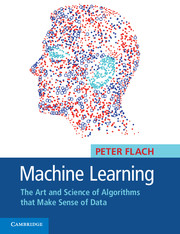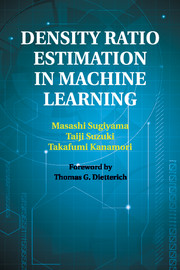Machine Learning
As one of the most comprehensive machine learning texts around, this book does justice to the field's incredible richness, but without losing sight of the unifying principles. Peter Flach's clear, example-based approach begins by discussing how a spam filter works, which gives an immediate introduction to machine learning in action, with a minimum of technical fuss. Flach provides case studies of increasing complexity and variety with well-chosen examples and illustrations throughout. He covers a wide range of logical, geometric and statistical models and state-of-the-art topics such as matrix factorisation and ROC analysis. Particular attention is paid to the central role played by features. The use of established terminology is balanced with the introduction of new and useful concepts, and summaries of relevant background material are provided with pointers for revision if necessary. These features ensure Machine Learning will set a new standard as an introductory textbook.
- Prologue and Chapter 1 are freely available online
- Pedagogic features include boxes summarising relevant background material and a list of 'important points to remember'
- Epilogue includes open problems in machine learning
Reviews & endorsements
"This textbook is clearly written and well organized. Starting from the basics, the author skillfully guides the reader through his learning process by providing useful facts and insight into the behavior of several machine learning techniques, as well as the high-level pseudocode of many key algorithms." < /br>Fernando Berzal, Computing Reviews
Product details
November 2012Paperback
9781107422223
409 pages
246 × 190 × 18 mm
0.88kg
120 colour illus. 15 tables
Available
Table of Contents
- Prologue: a machine learning sampler
- 1. The ingredients of machine learning
- 2. Binary classification and related tasks
- 3. Beyond binary classification
- 4. Concept learning
- 5. Tree models
- 6. Rule models
- 7. Linear models
- 8. Distance-based models
- 9. Probabilistic models
- 10. Features
- 11. In brief: model ensembles
- 12. In brief: machine learning experiments
- Epilogue: where to go from here
- Important points to remember
- Bibliography
- Index.





